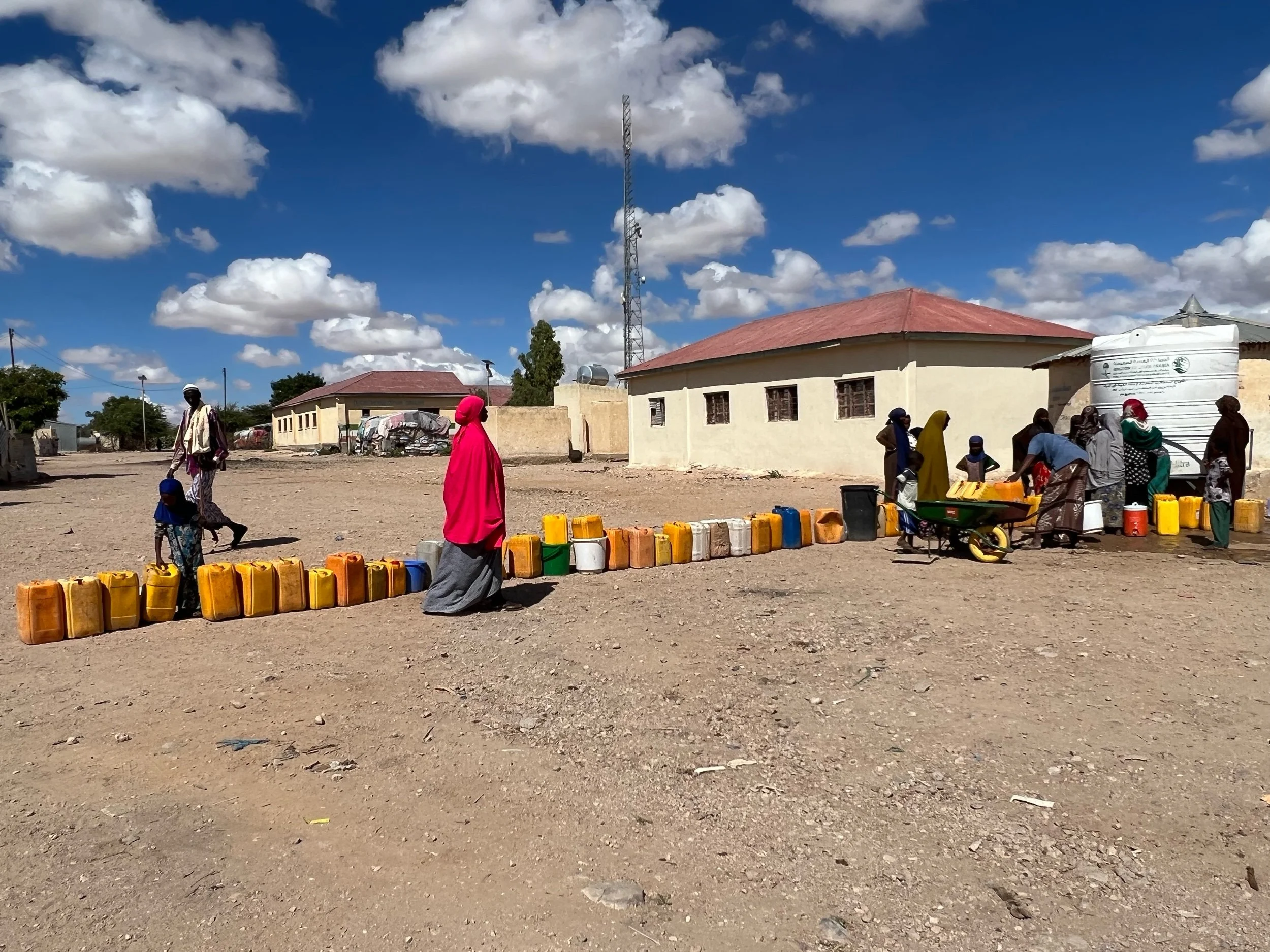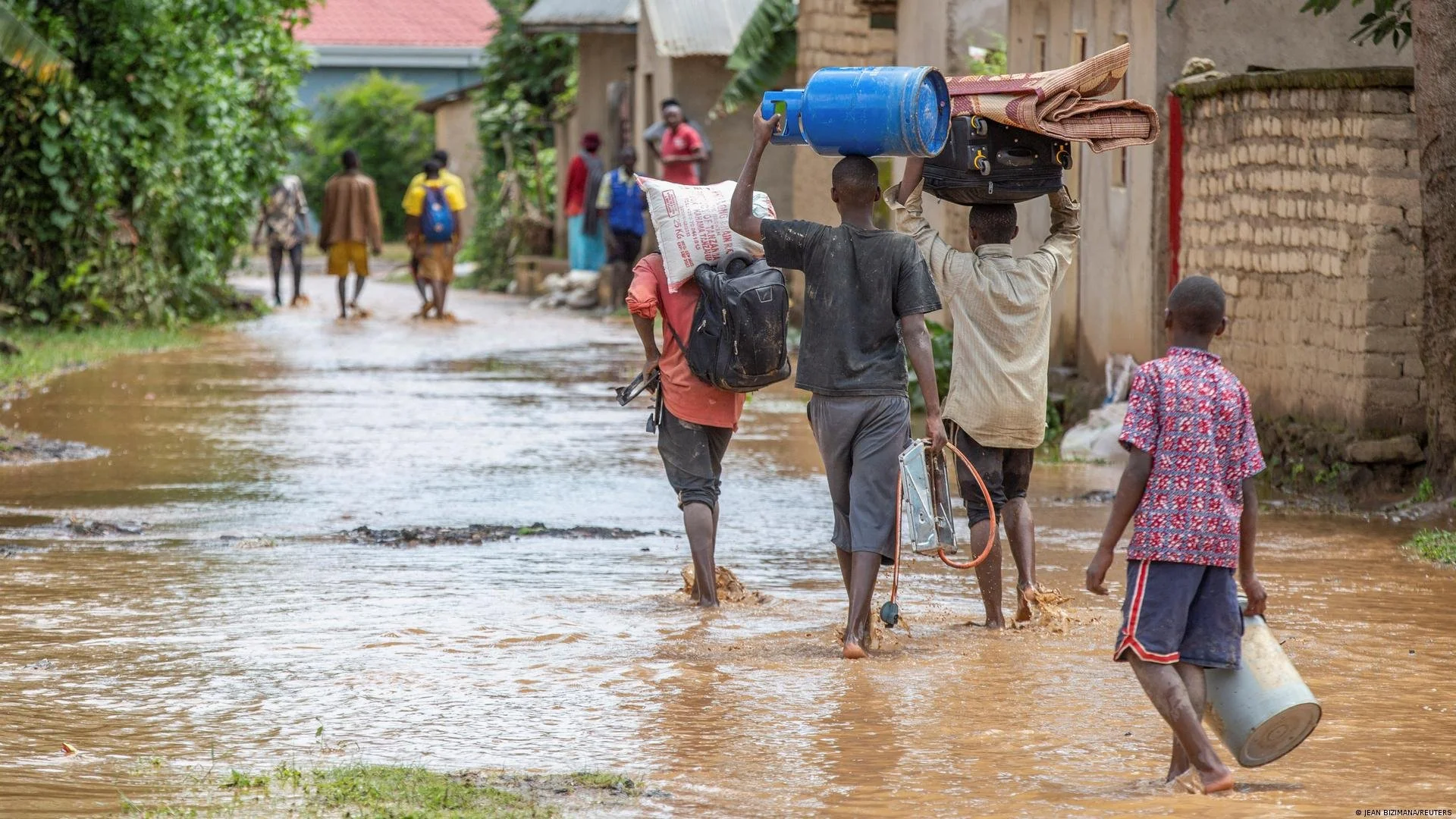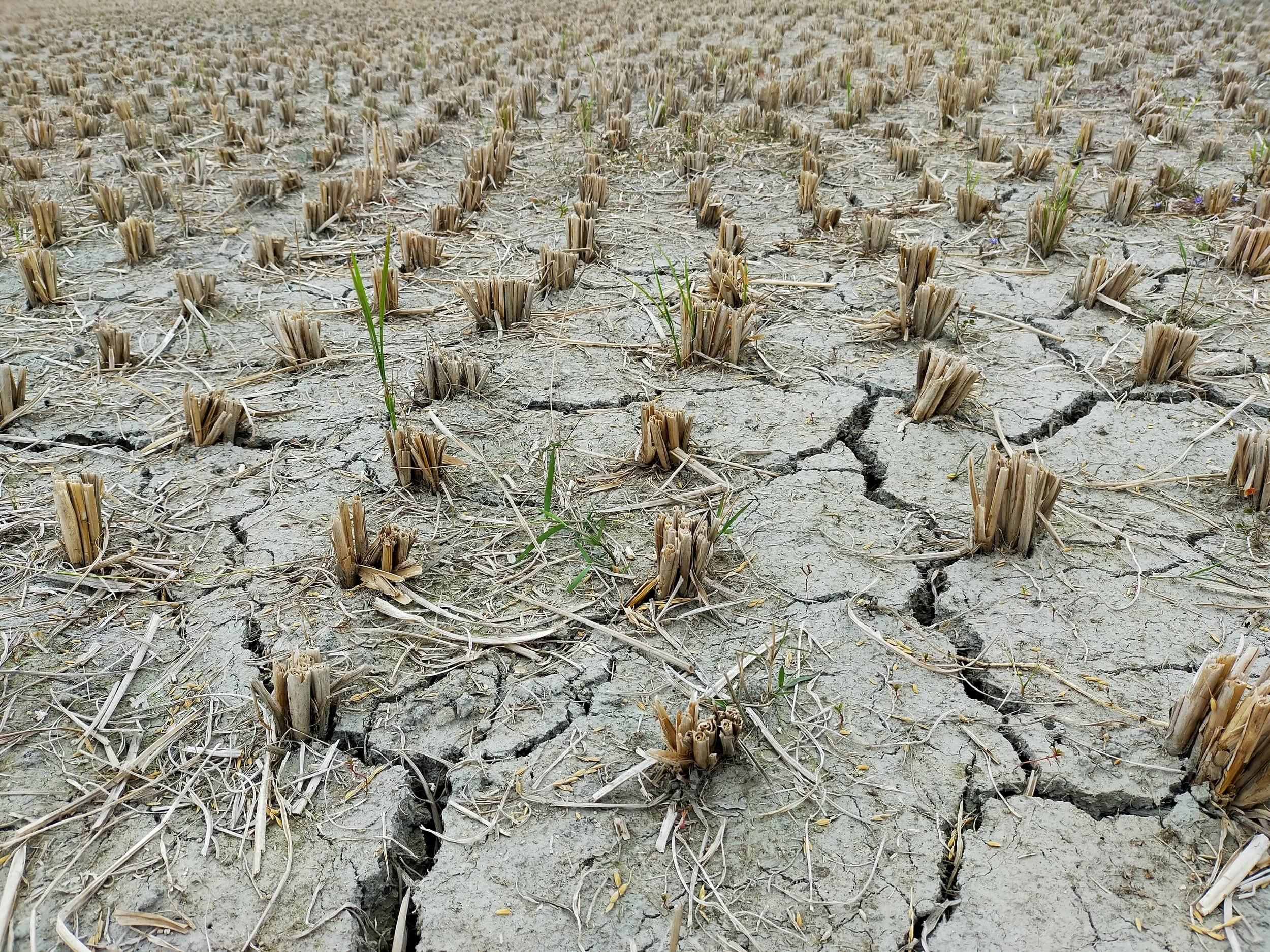Seeking Refuge - Regardless of Cause or Crisis - is Not a Crime
Seeking asylum is not a crime.
I used to say that all the time to naysayers, even to supporters, if only to believe it was still so.
Now I found myself saying it to an actual asylum-seeker.
I had met her at a local bakery in Manhattan. She said she was a migrant from Honduras in search of a job, needing help with navigating just about everything,
Waiting in line to order, I learned of her plight and reached out to help.
In the process I learned she had actually fled her country with her two sons after becoming the target of gang violence. I learned she had survived horrors at home, only to be held in a detention cell at the US border, simply for exercising her right to seek asylum. Now she feared she had made the wrong decision, and worse yet, a mistake because she had no basis for asylum.
Horrified and ashamed, I helped her navigate her job application and then told her how to access a free asylum clinic, explaining the US refugee system and the NY subway system, but utterly unable to explain the US political system that created her present plight.
As she left the cafe, I had a rush to yell out to the other cafe patrons blithely going about their day: say it with me, SEEKING REFUGE IS NOT A CRIME!
PANDEMIC BORDER But Long Before COVID
The Trump administration has been doing its level best to subvert international obligations towards refugees and asylum-seekers since taking office in 2017, including through the use of increased detention. Asylum-seekers who previously awaited court hearings on their claims outside, now do so in makeshift prisons. Now with one fell swoop, the COVID-19 pandemic has ushered in a pathway to obfuscate the right to seek asylum entirely and with it, threaten the health of those at the borders and beyond.
Under a new deportation policy, dressed up as a public health policy, US Customs and Border Control Agents are now empowered to turn away any asylum-seeker without hearing claims whatsoever. The move comes through the use of an arcane public health policy that gives the Centers for Disease Control and Prevention (CDC) the power to ban entry of people who may spread infectious disease in the US. Regardless of its presentation, the policy presents a total violation of the right to seek asylum under US and international law.
The pandemic border response is illustrative of ongoing US attempts to erode asylum space. And now this week, the administration has proposed new rules that would effectively end any semblance of asylum left in the United States, even if the Coronavirus restrictions are lifted. The Justice Department unveiled the changes Wednesday, and if enacted after a public comment period, a host of sweeping changes would allow most asylum cases to be thrown out even before a court hearing.
“Dressed up as a public health policy, US Customs and Border Control Agents are now empowered to turn away any asylum-seeker without hearing claims whatsoever. ”
In the weeks following the new Coronavirus deportation order, 20,000 asylum seekers were expelled without Coronavirus testing within an average of just 96 minutes of arriving at the border, effectively denying their rights to due process under the US Constitution and violating the most sacred cornerstone of international protection - the principle of non-refoulement - the prohibition against forcibly returning refugees or asylum-seekers to a country where they will face harm.
The government claims these emergency protocols are on the basis of public health - ours and the migrants - since the Coronavirus spreads so easily and thus it's imperative to reduce the number of migrants in detention cells. Of course, I can’t help but wonder if the government considered closing the detention cells all together in the name of public health, like some countries did, and if not that humane gesture, then perhaps ensuring the utmost public safety of the migrants in detention?
When Asylum is a Choice Between Life and Death
The 38,000 already detained in the US are denied just as many rights: the right to be free from detention, punishment for seeking asylum, the right to health and in the first case of a Salvadoran man who died from COVID-19 while in detention, the right to life. A second man, a Guatemalan detainee, died in May
A distress signal written in soap on a detention window simply read “HELP US.” Disputes linger over what spurred violence to erupt on May 1 at the center in Massachusetts, but there’s no denying it was over Coronavirus testing.
Conditions in detention centers are clearly conducive to the spread of disease. Immigration and Customs Enforcement (ICE) detainee transfers between states has led to COVID-19 outbreaks in at least 5 states. In Florida, increased cases inside three south Florida detention centers led one Miami federal judge to order ICE to disclose data on whether the government’s practice of frequent detainee transfers between facilities led to the spike.
An ICE detention center in California has been accused of using a harsh COVID-19 disinfectant over 50 times a day, causing several detainees to fall sick. ICE detainees have been forced to go on hunger strikes for soap, sanitary supplies and lack of protection against COVID-19.
Detainees have been denied adequate masks, sanitation and gloves, threatened with pepper spray for demanding their right to personal protective equipment and even reprisals for going public. A lawsuit filed on behalf of asylum-seekers in Phoenix alleges shocking unsanitary conditions and treatment with detainees in inadequate personal protective equipment forced to clean a COVID-infected facility. More than two dozen lawsuits have now been filed in federal court, demanding the release of detainees at heightened risk to COVID-19.
COVID Deportations
More than 1,300 detainees in 54 facilities in ICE custody are now COVID-19 positive. That’s half of the 2,600 detainees tested as of May 28. However ICE’s own accounts admit that infected detainees may not still be in its custody, which makes sense since the United States continues to deport migrants and asylum-seekers from its borders.
On May 11, a deportation flight from Texas to Haiti departed with 50 passengers who were sent to hotels for quarantine upon arrival in Port-au-Prince at the Haitian government’s expense, although the country has only four medical centers and 200 beds to treat COVID-19. However, ICE did not deport five Haitians who tested positive for COVID-19 on that flight only after media reports revealed US government plans to initially deport them as well.
Deporting individuals who are known to be infected with the virus violates US and international public health guidelines to prevent the spread of the virus. The sheer cruelty and irresponsibility of these actions prompted 27 members of the US Congress and 164 human rights organizations to urge the Trump administration to halt the Haitian deportations. Since April deportations, three Haitians have tested positive for COVID-19 upon arrival in Haiti.
In Guatemala, over 15% of its caseload comprise US deportees, where at least 119 deportees from the US have now tested positive. On a May 13 flight, 16 Guatemalan deportees tested positive for COVID-19. Guatemala first suspended deportations from the US but then allowed them to resume after the US promised stringent testing. However after that, a deportee who tested negative was confirmed COVID-19 positive upon arrival in Guatemala.
Swift Air, one of ICE’s major subcontractor airlines has made numerous flights between the US and Latin America, including Brazil and Ecuador, where there are major COVID case spikes, and to Mexico and a majority to El Salvador, Guatemala and Honduras, and researchers tracking these deportations conclude that ICE has deported many infected persons to countries unprepared for a pandemic.
“In essence, the US government has been forcing asylum-seekers into untenable situations for a long while in order to deter border asylum. Now with one global pandemic, they have upped the ante, forcing asylum-seekers into an even worse dilemma: to choose between the right to seek asylum and the right to health. ”
The Right to Health
Even accounting for the most minimal level of health protections - the right to health is protected in international law. One of three treaties generally regarded as the International Bill of Human Rights, the International Covenant on Economic, Social and Cultural Rights (ICESCR) is the strongest on this legal application, including obligations to respect the right to health for prisoners, detainees, migrants and asylum-seekers.
The International Convention on the Protection of the Rights of All Migrant Workers stipulates the right to emergency medical care. Although the US is not party to this convention nor the ICESCR, surely its obligations are morally sacrosanct, and one could argue the latter as customary international law.
“More than 1,300 detainees in 54 facilities in ICE custody are now COVID-19 positive. That’s half of the 2,600 detainees tested as of May 28. ”
At any rate, the principle is upheld legally in many other international human rights legal instruments, including the Convention on the Elimination of all Forms of Racial Discrimination, which the US is party to, and the Committee on this treaty is clear about affording non-citizens an adequate standard of healthcare. As well, the Special Rapporteur on Health has stressed the extreme vulnerability of undocumented populations and sick asylum-seekers, who should never be denied their rights to health.
Human rights actors and UN agencies on health, human rights, migration and refugees have all called for the immediate release of detainees held in cramped and unsanitary conditions within detention facilities. And while some countries like Spain and Switzerland closed its detention facilities, others drastically reduced its detainee numbers, while the US continued its policies as usual.
Proving perhaps that cruelty really is the point, ICE continues to detain 4,449 asylum-seekers who have established a credible fear of persecution. Quite clearly these are bonafide asylum-seekers that should not be detained, under any circumstance, even under the current draconian US policy. ICE has also continued to detain persons approved for release, and a further 11,000 non-violent persons.
In essence, the US government has been forcing asylum-seekers into untenable situations for a long while in order to deter border asylum. Now with one global pandemic, they have upped the ante, forcing asylum-seekers into an even worse dilemma: to choose between the right to seek asylum and the right to health. A choice that should not be a choice between either at all. Rather a right to both, as enshrined in both US and international law.
“Central American country diplomats and experts tell us there is no doubt climate change is contributing to the present migration we are seeing at the US border. ”
WHY FLEEING?
The bulk of the border arrivals via Mexico these past years have been asylum-seekers from Mexico and Northern Triangle Countries (NTC): El Salvador, Honduras and Guatemala. The bulk of recent forced returnees during the Coronavirus pandemic have also been largely from these countries.
There’s no doubt the NTC asylum-seekers are fleeing violence, but also, climate change. Naysayers may call it poverty and they would not be wrong. It is poverty, but it is poverty fueled by food insecurity, fueled by drought, fueled by climate change and climate variability.
Our field research on climate change impacts on Central America migration to the US has been delayed by the global pandemic but our research and conversations with experts and Central American country diplomats have been ongoing, all of whom tell us there is no doubt climate change is contributing to the present migration we are seeing at the US border.
When climate change and violence coalesced to increase border arrivals, the US utilized every tool in its arsenal to deflect responsibility. Now with COVID-19, it’s using the same playbook.
When the US reversed its own asylum position on a Guatemalan case, announcing in June 2018 that it would no longer be granting asylum to victims of domestic abuse and gang violence on the basis of membership in a social group, the government found yet another way to limit asylum protections. In so doing, it limited asylum claims of anyone who might constitute a social group, such as women and children, as well as anyone seeking protection on the basis of sexual orientation, gender and child abuse.
This was a very deliberate act on the part of the government since it was well-documented by then that women and children were fleeing high rates of domestic abuse, child abuse and gang violence in these Central American countries.
At every turn, the US is eroding, circumventing and (illegally) redefining the law to suit its anti-immigrant agenda. It adopts new policies, such as the Migrant Protection Protocols, to return asylum-seekers to Mexico, now expanded to Guatemala as well, to await hearings, which has essentially trapped Central American asylum-seekers in 11 border cities along northern Mexico. It lowers its own refugee admissions ceiling and belabors its resettlement processing system, all in a quest to slow refugee arrivals.
The latest moves to restrict asylum access, if enacted, will no doubt be challenged in court, just as the current pandemic restrictions are by the ACLU. Quite clearly, the US has the capacity to protect public health, even in a pandemic, without violating its legal obligations to uphold the right to seek asylum. And even in its amoral insistence to continue detention, it can choose to provide testing, treatment and quarantine instead of deportation.
The past three years have been a continuous onslaught on refugees and the right to seek asylum. While conjuring new restrictive policies, they fail to realize though that crises keep mounting, the planet keeps warming and the protection needs of vulnerable and oppressed communities continue, regardless of the political desires of a corrupt few.
“At every turn, the US is eroding, circumventing and (illegally) redefining the law to suit its anti-immigrant agenda.”
Given the largely unchecked US actions thus far, I can’t help but wonder what the US will do when climate displacement overwhelms response and legal capacity?
The COVID-19 crisis has shown us the shrinking space for migrant workers, refugees and asylum-seekers to gain access to countries as borders shut down over virus fears. Similar sentiments were seen in the Syrian refugee crisis. What will happen when the next crisis hits? The climate crisis is projected to impact those who have the least and those already facing complex crises, and will no doubt increase human displacement.
Whether the displacement is largely internal or across borders, this present COVID crisis and the many others preceding it have shown us governments are nowhere near ready nor so inclined to deal with its effects.
However, COVID-19 has shown us that, as a society, we are capable of making the necessary changes in response to crises, even with compassion and humanity, and that is the test-run we need to do it again with climate change.
What You Can Do
Detention:
Many of the US detention centers fall under the purview of municipal laws and ICE and local police collaborations take place through 287g agreements that are locally voted upon, so there’s much you can do to lobby your local government to stop the practice and expansion of detention.
Detention Watch Network is a great place to start with their many campaigns
RAICES Texas and RAICES Action Fund offer an excellent range of advocacy initiatives you can take from home, behind a laptop, in-person or whatever suits you.
United We Dream has a (MoveOn-supported) petition right now to demand ICE stop using hazardous chemicals in response to COVID-19. Sign the Petition NOW to ICE Acting Director Matthew Albence.
Support New Sanctuary Coalition in its numerous volunteer opportunities in legal, translation, accompaniment, communications and more in the fight against deportation.
Legal
Help the ACLU who are suing the Federal government at every turn for its illegal erosions against the right to seek asylum
Legislation
Support climate action and the passage of the Green New Deal
Senator Edward Markey of Massachusetts introduced unprecedented “climate refugee” legislation last year to create a new humanitarian program of assistance and resettlement for those displaced by climate change across borders and thus, outside the protection of international law.
Watch this space for updates on the bill and how you can help.
Climate Displacement
Be an active agent of shaping future policy by supporting Climate Refugees field mission to Central America.
Follow Climate Refugees SPOTLIGHT: Climate Displacement in the News and PERSPECTIVES: Climate Displacement in the Field to learn more about these issues and more. Also on social media: Twitter, Instagram, Facebook































